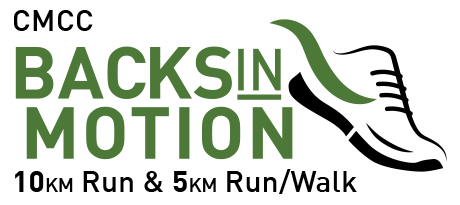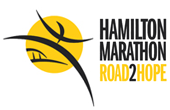More you need to know to safely cross the finish line.
Written in 2003 after my first marathon…attempt
In our last newsletter I wrote about the importance of proper hydration in improving and sustaining performance while preventing injury. Little did I know how important this message would hit home. After all the research I had done in writing the article, I ran my first marathon and bonked badly. I had no idea I was among that small number of people who sweat profusely. All my marathon training was in the cold winter and spring of 2003 when I didn’t sweat as much as I would on warmer days. I didn’t know my own body. I had never run that far, that fast, at that temperature, and boy, do I know now. I was running the Ottawa Marathon at a 4:30km pace (in shorts for only the 2nd time that year) when I came to the 38km marker having not hydrated nearly as much as I should have. Hitting the wall, take it from me, really does mean hitting the wall. It felt as though I had Velcro on the soles of my shoes. Every step thereafter took everything I had. At this point stopping would have been the right choice, however I insisted on hobbling along, finishing the marathon, then collapsing. I found myself in the medical tent where the staff frantically worked on stabilizing the various problems I was having. I was dehydrated, I had a dangerously low electrolyte count and my blood was pooling in the muscles of my legs. Seven hours and seven units of saline later I has able to hobble out of Ottawa General Hospital a little bloated but alive and kicking, thanks to my friend Andy Hayes who first recognized there was something wrong and the great medical team at the Ottawa Marathon.
What did I learn? Well, if I was to run another marathon and finish standing, I had to do things very different. I had to look more closely into just how much I sweat in various temperatures. That information would later prove to be exactly what I needed to complete my second marathon safely and of course, standing (very proud).
My case, although extreme, demonstrates how important a role adequate hydration and electrolyte replenishment plays in performance and recovery. In my last marathon I chose to hydrate with Gatorade which also provided for some electrolyte replenishment and a little carbohydrate boost. That, a few Gels and a cool day seemed to be what it took for me to complete a marathon safely, enjoying every step (well…all but the last couple thousand or so). It is important to mention that over hydrating (hyponatremia), can also cause serious problems for runners. Especially for female runners who run at a 4 to 5 hour marathon pace where sweating is less intense. Over hydrating dilutes the body of important electrolytes which are required for proper muscle function. Because women typically have less muscle mass than men, they are at greater risk. The new norm, when it comes to hydration and sport, has changed somewhat even over the last 6 to 8 months. No longer is “drink as much as you can handle” the rule. Several sport and medical associations are adopting a ratio of 1:1. That is, 1 litre lost 1 litre in (assuming you start off well hydrated). To make sure you’re ingesting enough electrolytes, make it Gatorade, GU Brew, Eload, Cytomax or some other sport drink containing electrolytes. In my case and to a smaller degree every other marathoner, ingesting fluids as fast as you are losing them may be impossible, especially when the temperature is above 18 or 20 degrees. Our bodies can only process fluids at a certain rate, and our sweating can supersede that rate. That is why mild dehydration is pretty commonplace among marathoners. Check out the self hydration test posted on teamrunningfree.com to help you understand your personal requirements in training or on race day.




















